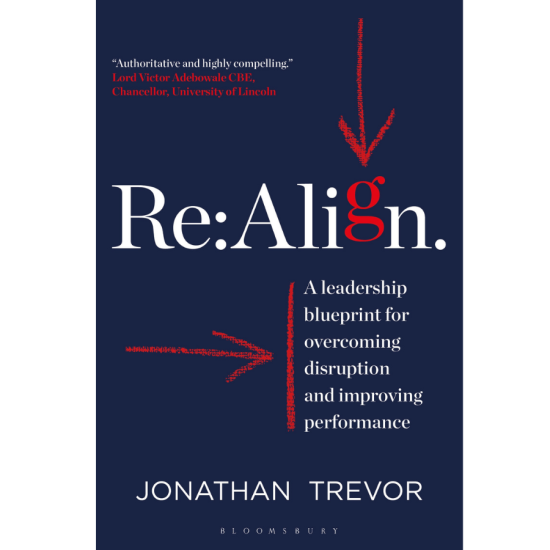Working as a business school professor sometimes feels like being in a Back To The Future movie.
I don’t mean time travel, of course, but that so many classical works of yesteryear speak truth to today’s challenges, despite the world being a very different place. Take the relationship between rationality (very classical) and the much more recent focus on alignment (very topical) in organisations.
One of the most influential thinkers about the modern organisation, Maximilian Weber, brought the notion of rationality into the managerial mainstream. So, the theory goes, organisations can only be considered effective if they are designed and operated rationally, along the same lines as designing and managing a machine. Indeed, the ‘machine bureaucracy’ was the dominant logic of how we organised work in the Industrial Age. It was the basic template to enable organisations to grow large and grow fast by reducing them to their simplest most efficient form.
Weber outlined two dimensions of rationality — substantive and formal — which should govern organisations. An organisation can only be considered effective if the ends (i.e., its purpose) are rational. This is what is referred to as substantive rationality. Equally, effectiveness also requires that the means (i.e., its structures, processes and people) through which those ends are implemented in practice are also rationally selected and managed. This is referred to as formal rationality. In other words, an organisation’s ends and means must align to succeed.
For instance, a business might have the noblest of purposes at heart, but unless it can enact its purpose as intended, it is merely a set of good intentions. The same idea is expressed today in popular phraseology as the difference between doing the right thing (whatever ‘right’ may mean in prevailing societal standards and norms) and doing things right.
Differentiating between ends and means establishes the importance for enterprise performance of how well all the pieces of an organisation fit together – or align. Every enterprise consists of common components (or pieces, you might also say), including principally, its raison d’etre (its purpose), its approach to market (its offerings, strategic positioning and priorities) and how it is organised (its organisational structure, culture, processes and people) to perform in line with its stated performance aspirations.[i]
Like Weber’s ends and means, an enterprise without an effective strategy will not fulfil its stated purposes. Similarly, a company’s strategy will not be implemented unless it has developed the required organisational capability by making careful investments in selecting and developing its people, technology, behaviours and knowledge (amongst other things).[ibid] Highly aligned organisations are more productive, capable, differentiated and purposeful, all other things being equal.[ii] In today’s changeable business environment, organisations are likely to have to realign all of their moving pieces to remain capable of meeting the unforeseen.
Alignment (and realignment) should be baked into how we think about organisations and manage them for value. And yet, many of today’s organisations – perhaps even most – are misaligned. A survey of senior executives of global companies indicates ninety per cent believe that misalignment in the form of disconnection between organisational ends and means renders their organisation uncompetitive and vulnerable to disruption.[iii]

Indeed, if Covid-19 could be considered a test of resilience, many poorly aligned organisations struggled or failed during the pandemic. Highly aligned organisations were better able to respond to short-term challenges of disruption to consumer demand, supply chains and other shocks arising from the unprecedented public health crisis. At the same time, many highly aligned organisations I worked with during the pandemic did not wait until the crisis was over (and it is still on-going at the time of writing) to proactively realign their business fundamentals. Their goal was to overcome disruption by repositioning themselves for advantage in the longer-term post-pandemic environment.
Consider the example of the car manufacturer, Jaguar Land Rover (JLR). JLR has committed to radically overhauling its range of luxury cars to include a full line of electric vehicles by 2025. This commitment to electrification and the phasing out of the internal combustion engine is a response to environmental concerns and incoming government regulation (the UK, for example, will ban the sale of new petrol and diesel vehicles from 2030), but also a bet on what JLR thinks customers will want in the future. Equally, electrification is accompanied by a pivot from the mid-range luxury market and competition with the likes of BMW, Mercedes and Lexus, to the super-luxury market. JLR in the future will likely produce fewer high-end cars and compete against the likes of Bentley. It is not simply its approach to market that is being realigned. To implement this shift in strategy, the JLR organisation is also being transformed, to be smaller, leaner and more focussed on innovation. From end to end, JLR is undergoing a strategic realignment to ensure it is fit for purpose in the long-term future.[iv]
From these conversations with forward thinking leaders emerge some important principles for others to consider:
- Alignment: alignment should be considered the ideal end state of an organisation. It is the responsibility of the organisation’s leadership to achieve a state of high alignment to ensure the organisation is capable of performing its purpose as best as possible in the prevailing circumstances of its business environment.
- Realignment: realignment is the process of rearranging and reforming the moving pieces that make up an organisation to achieve a high state of alignment (or equilibrium). To coin a phrase made popular during the pandemic, strategic realignment is how organisations can ‘Build back better’.
- Strategic: but like Weber’s notion of rationality, realignment – achieving a state of high functioning equilibrium – cannot be achieved through non-rational decision-making or action. In other words, a state of high alignment does not occur by random chance or luck. And the process of achieving it cannot be accidental. Both alignment and realignment are matters of strategic concern and should be treated as such.
- Enterprise-wide and inclusive: Achieving and maintaining a state of high alignment results from deliberate choices made at every stage of the design and management of an organisation at all levels, including the organisational (i.e. whole organisation), divisional (or line of business), team and individual levels. And, of course, the view can look quite different at each of those levels, especially in complex environments, which is why leaders at all levels need to have better conversations about the alignment (and realignment) of their business overall, and not rely upon the wisdom of the very few at the top of the organisational hierarchy.
The result of these considerations is to arrive at a set of strategic realignment priorities — the transformations, either urgent or longer-term, and minor or major — that must be enacted if an organisation is to survive in the short-term and thrive in the long-term in a more complex and dynamic business environment that is the hallmark of our age of disruption.
Jonathan leads the Oxford Enterprise Leadership Programme in addition to his teaching on the MBA and Executive Degree programmes.
Jonathan’s book, Re:Align: A Leadership Blueprint for Overcoming Disruption and Improving Performance, was published by Bloomsbury Business in June 2022 and a special edition was published in Japanese in September 2023.
References
[i] Trevor, J. & Varcoe, B., (2017). How aligned is your organization? Harvard Business Review. 7 February. Harvard Business School Publishing.
[ii] Trevor, J. (2019). Align: A Leadership Blueprint for Aligning Enterprise Purpose, Strategy and Organisation. Bloomsbury Publishing.
[iii] Economist Intelligence Unit (2017). Closing the gap designing and delivering a strategy that works.
[iv] Campbell, P (2021). Jaguar Land Rover lays out electric plans in radical overhaul. Financial Times. February 15th.




